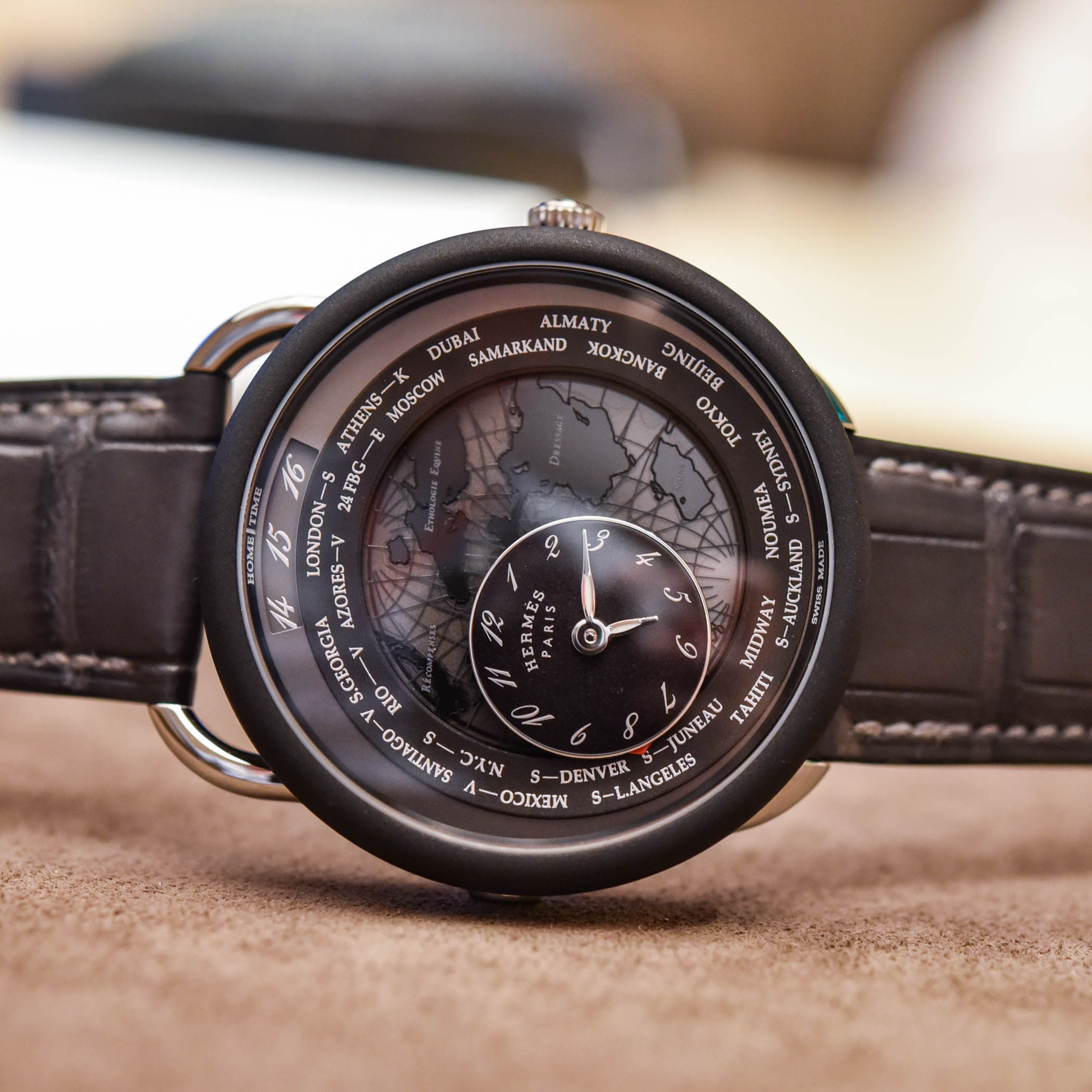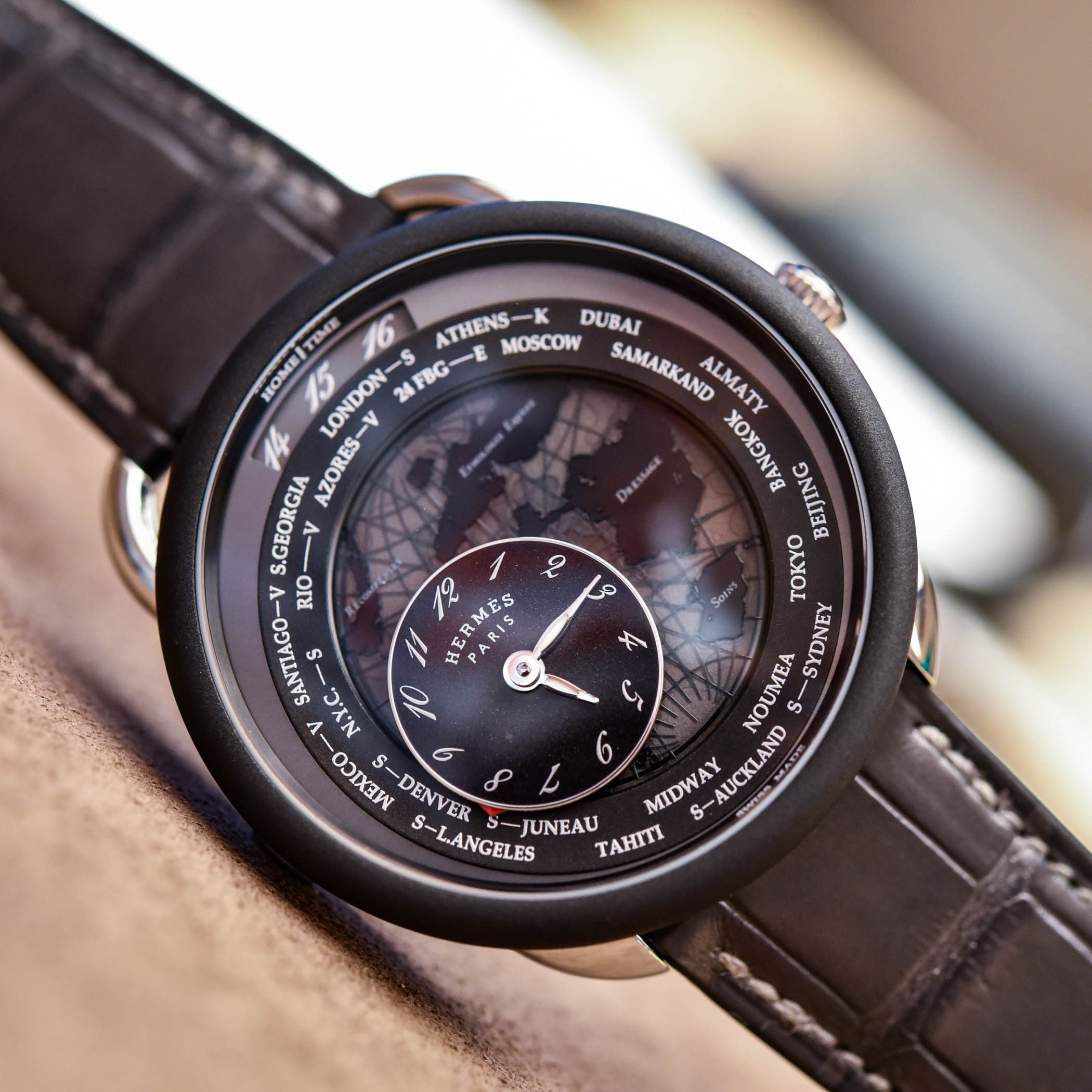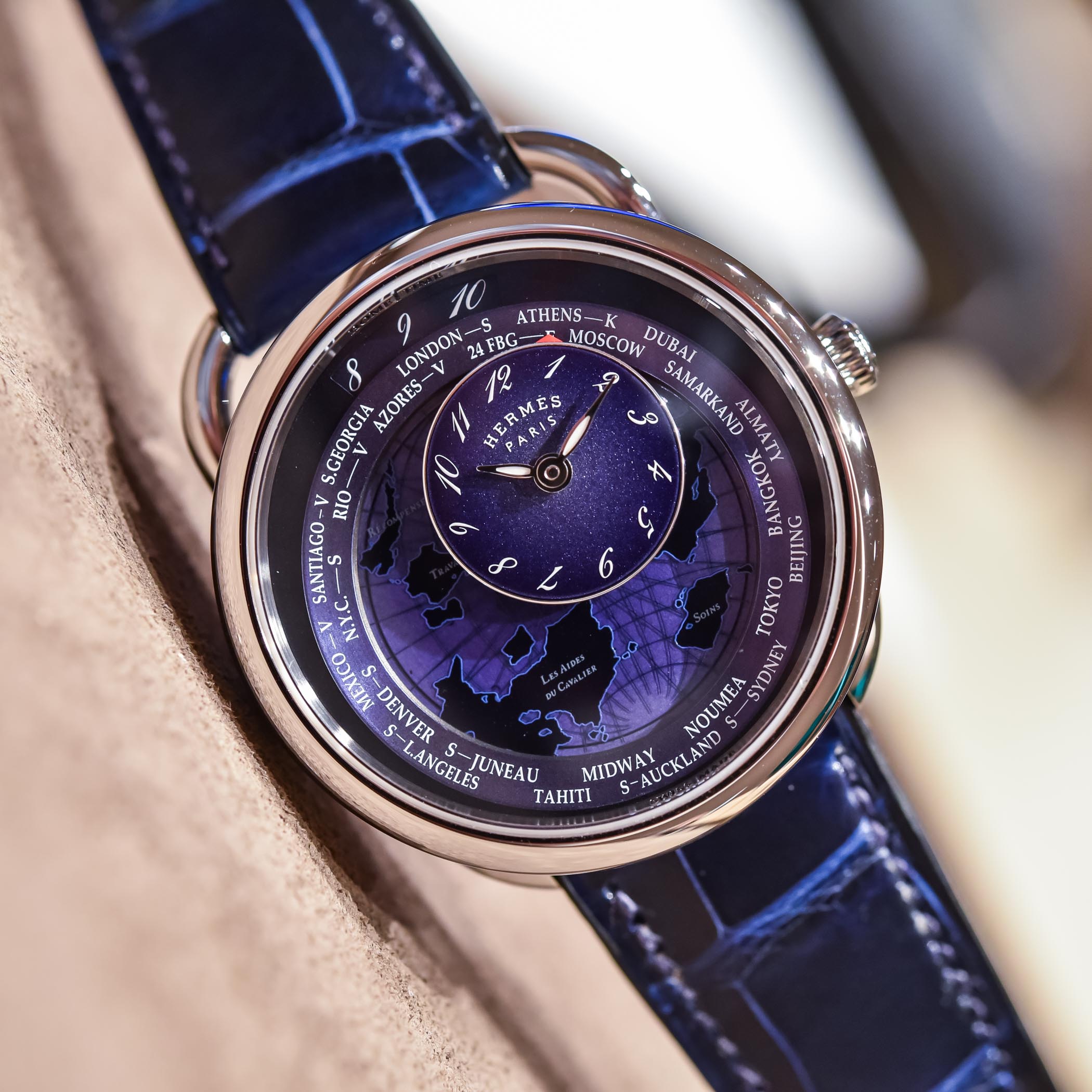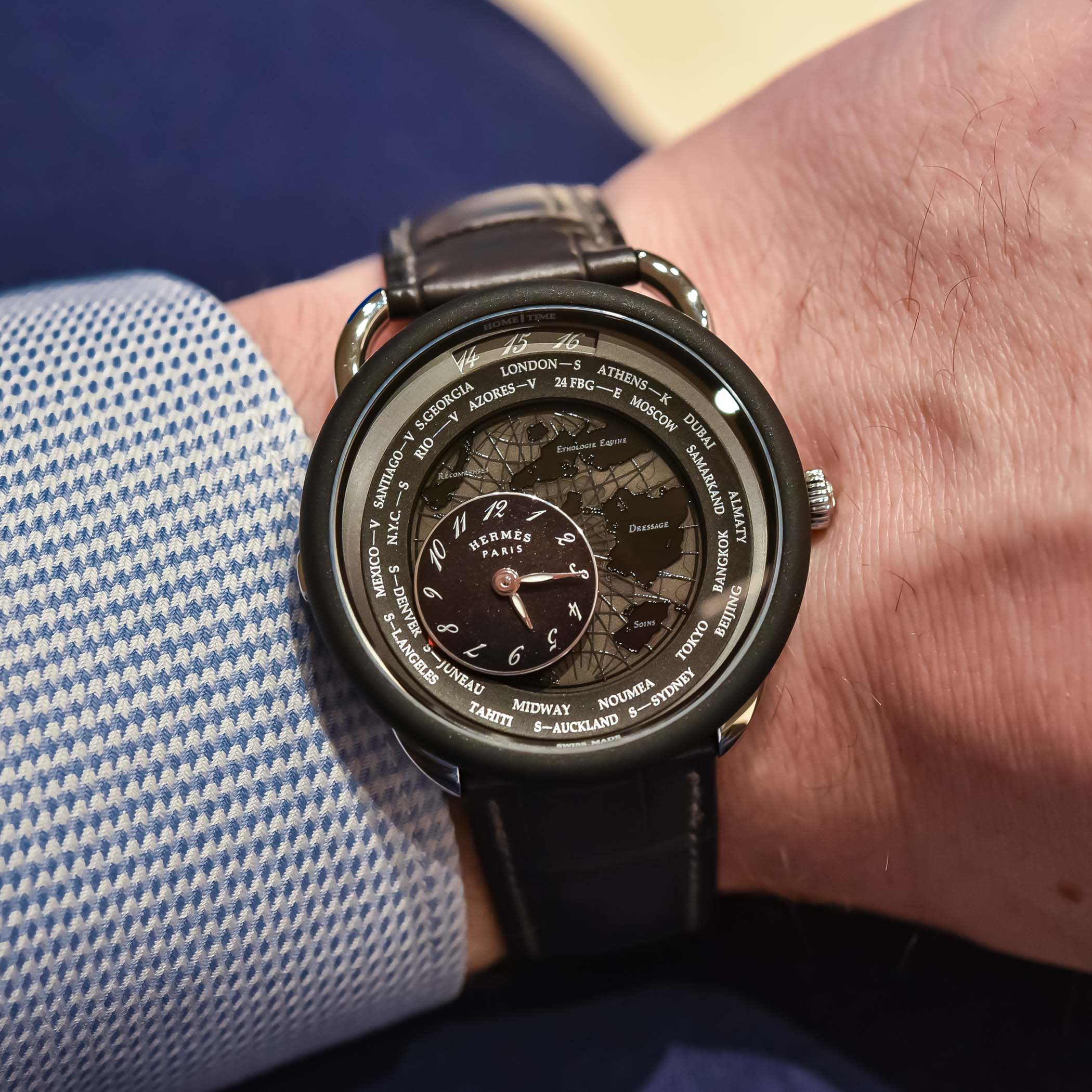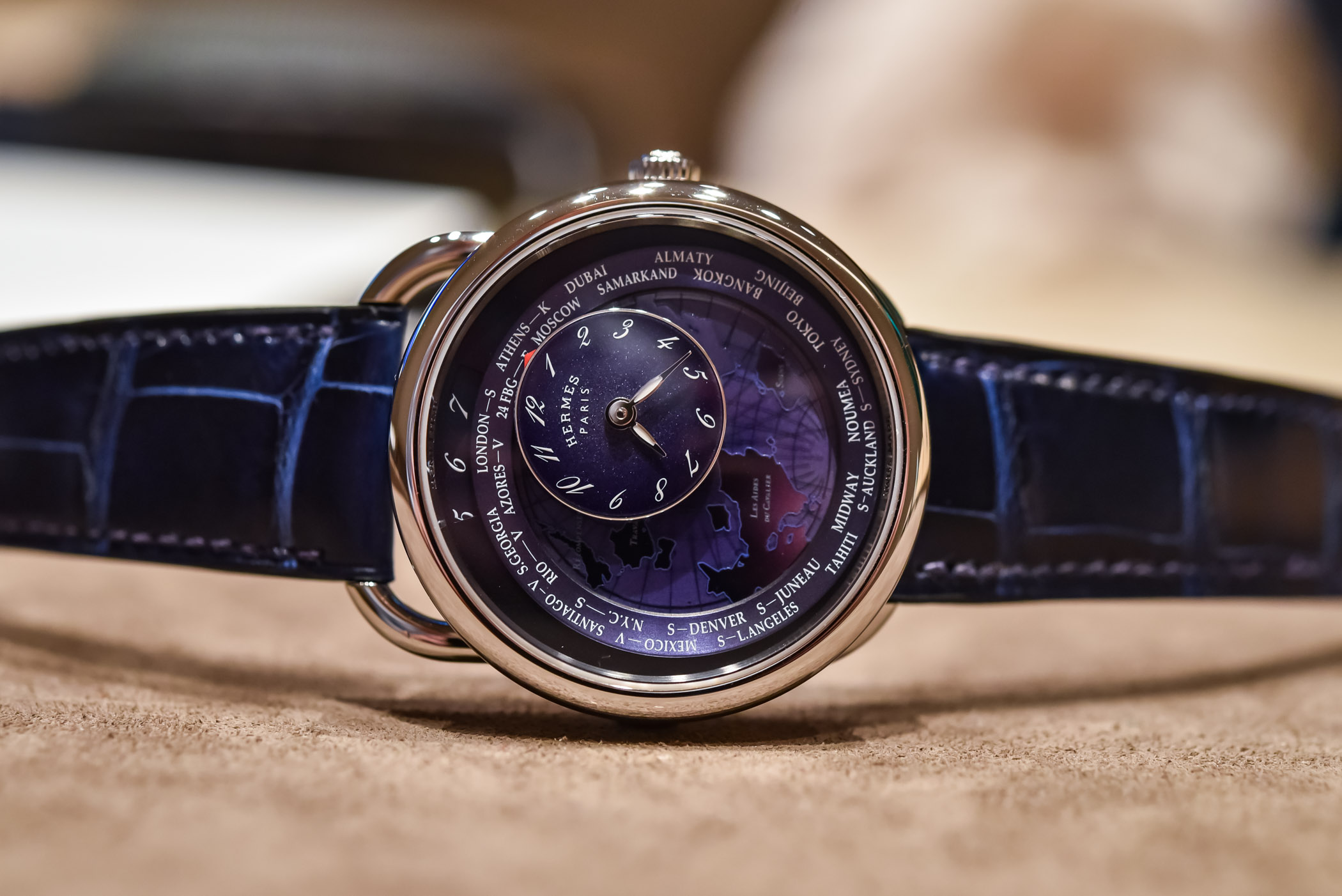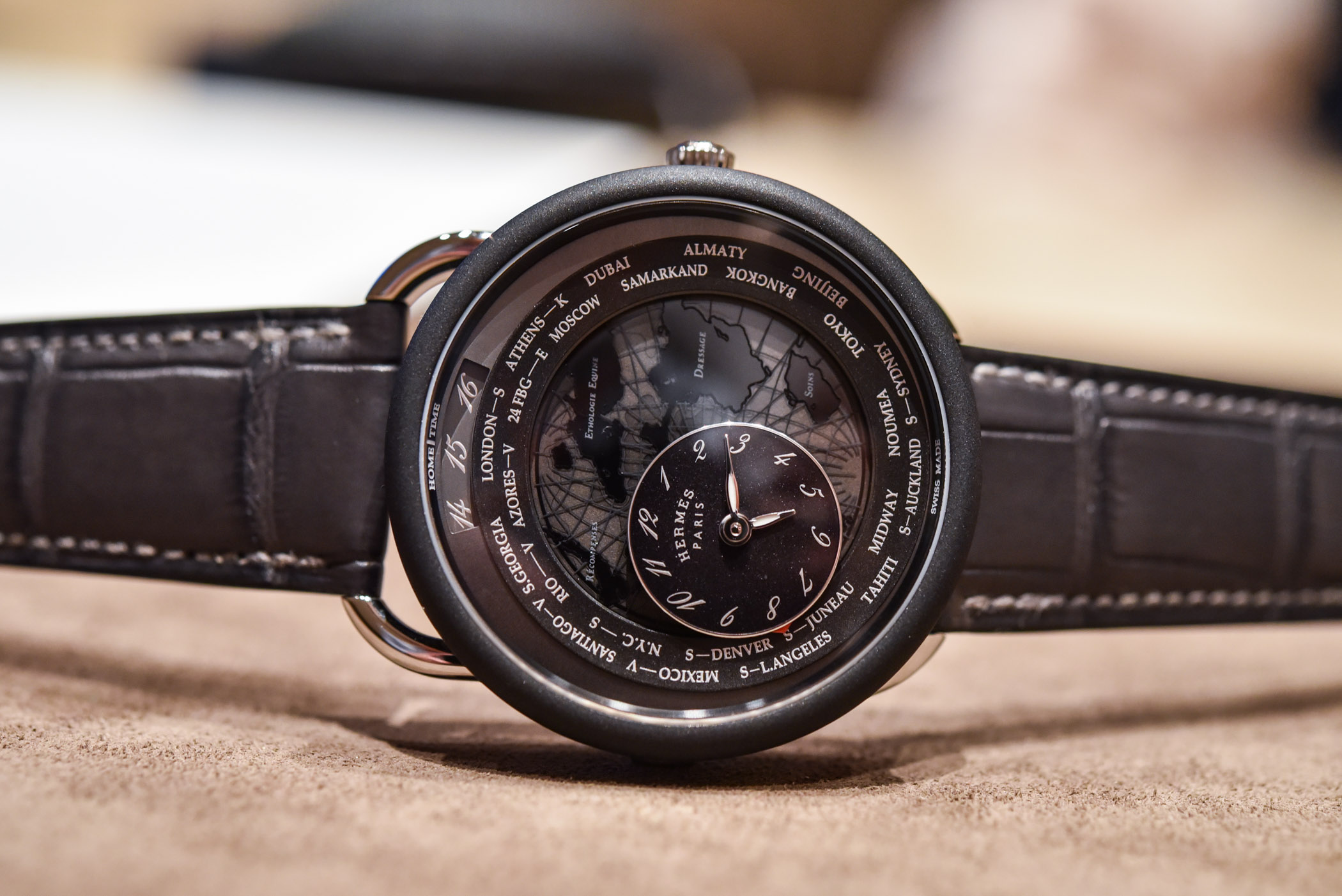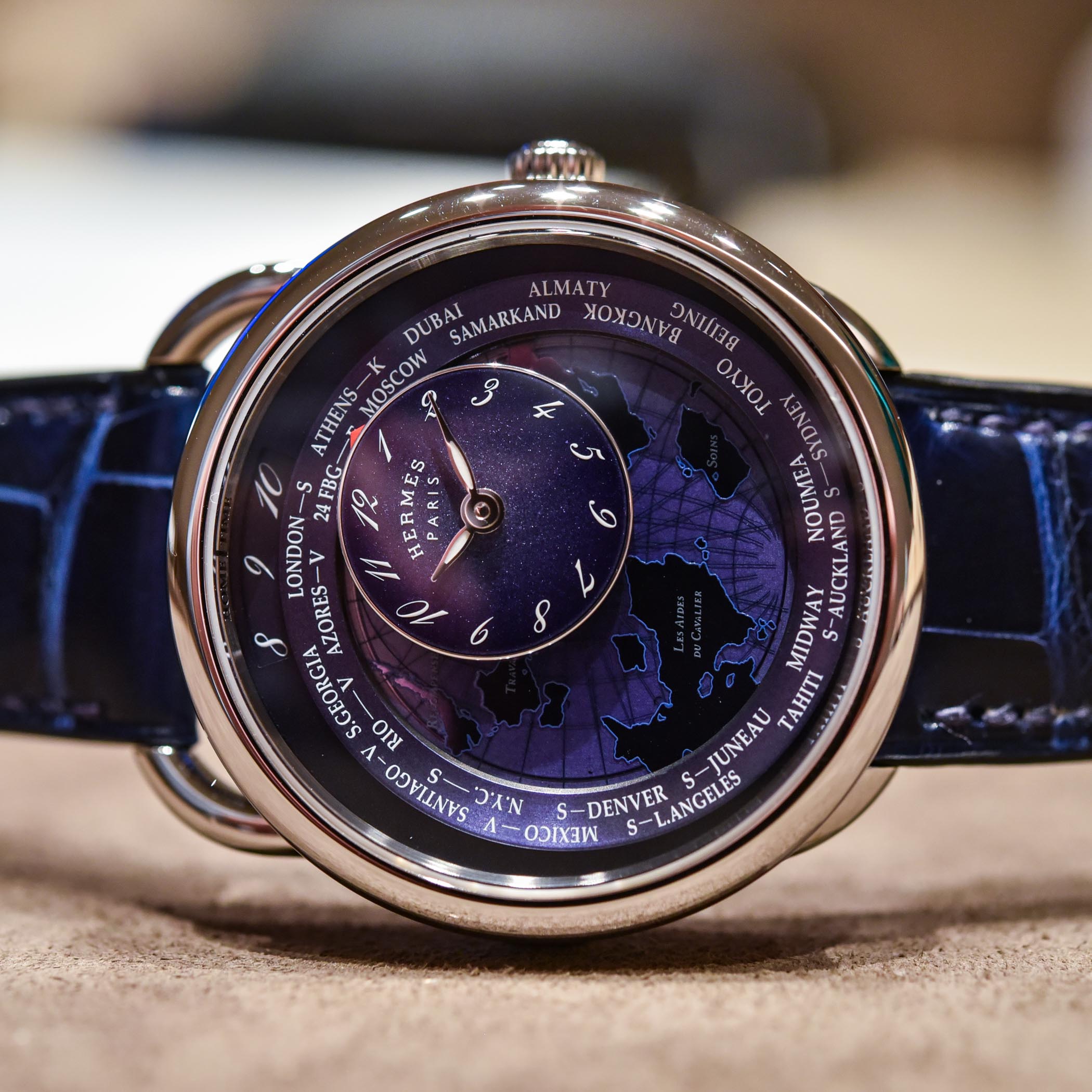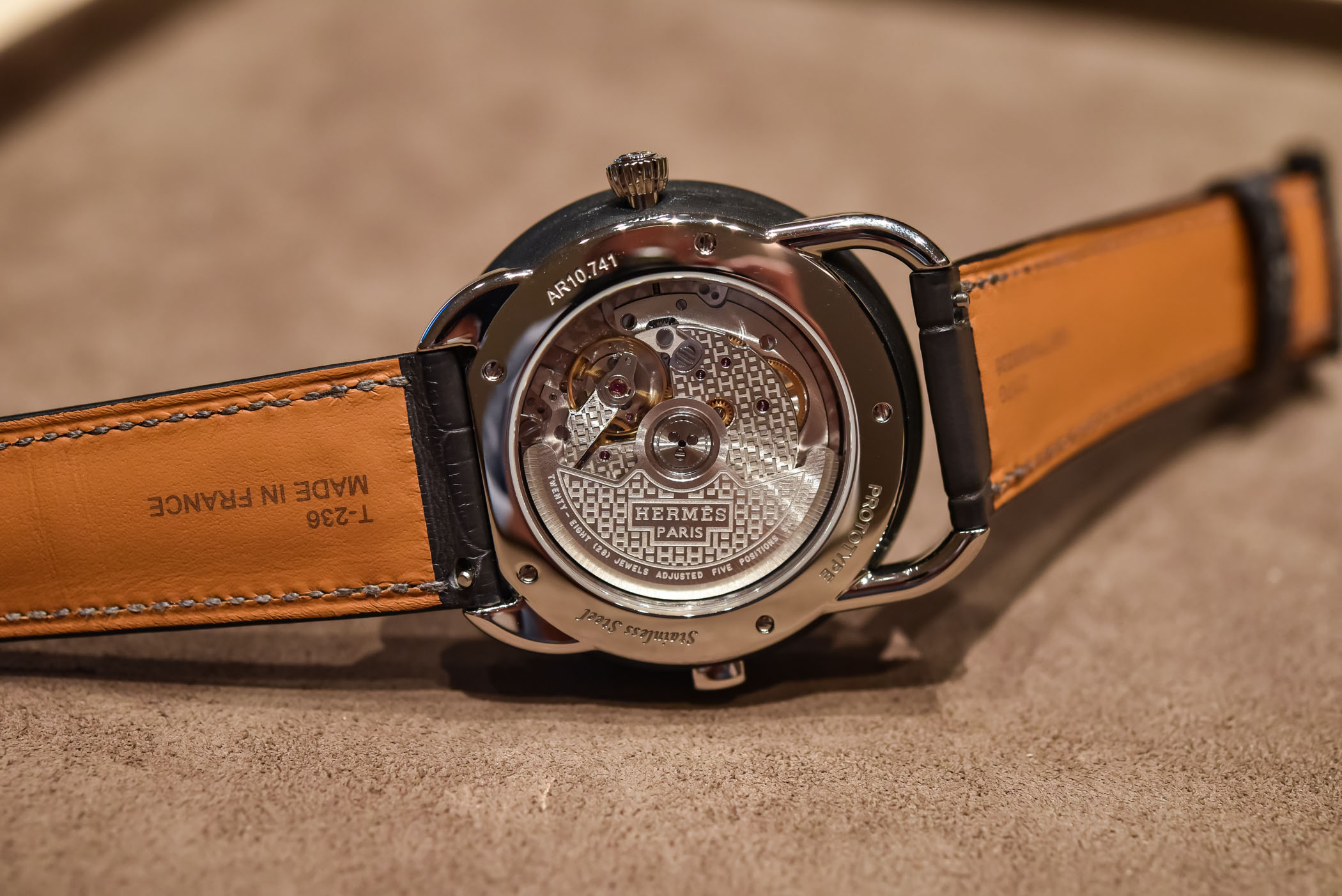The Hermès Arceau Le Temps Voyageur Reinterprets the Travel Watch
The surprising Travelling Time watch with a magical satellite sub-dial gliding over an imaginary equestrian planet.
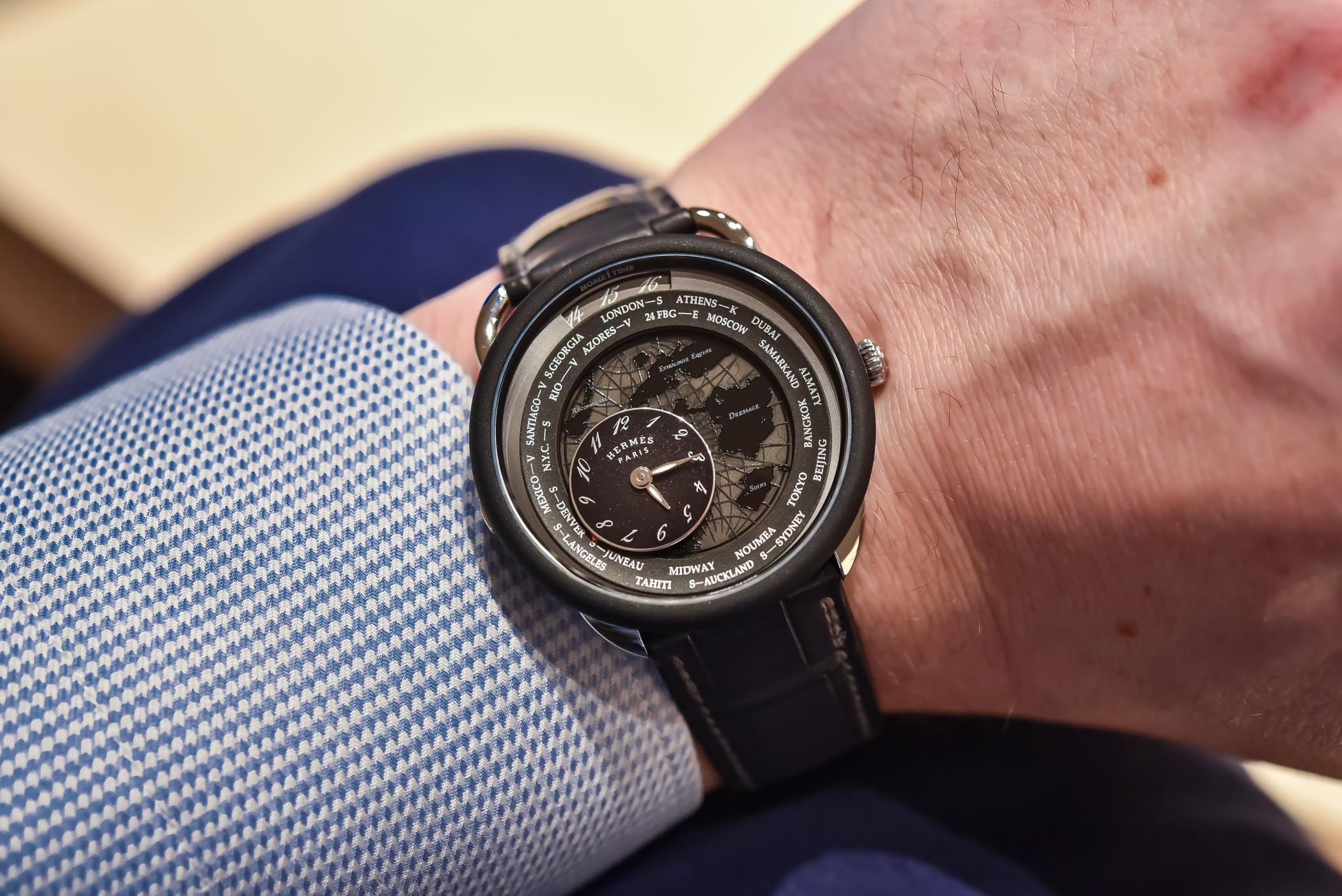
Like everything that Hermès does, the Arceau Le Temps Voyageur is a product of impeccable mechanical quality combined with the Maison’s singular dash of poetry. Who can forget the lyrical Arceau Le Temps Suspendu with its complication that literally suspends time on demand? For 2022, the elegant asymmetrical Arceau case hosts a travelling time complication developed for the brand by talented watchmaker Jean-François Mojon. Presented in a 41mm platinum and black DLC-treated titanium case or a smaller 38mm steel case with a blue dial, the Arceau Le Temps Voyageur is one of the most surprising and animated interpretations of a dual time traveller’s watch, depicting time in motion.
Equestrian inspiration
The asymmetric stirrup-shaped lugs and ‘galloping’ slanted Arabic numerals of the Arceau watch take us back to the origins of Hermès, which started life in 1837 as a producer of harnesses and saddles in Paris. Equestrian motifs have always been popular at Hermès, one of France’s oldest family-owned and run luxury companies. The distinctive lines of the Arceau were designed by Henri d’Origny in 1978, the celebrated artistic director of Hermès who defined le gout Hermès during his six decades at the Parisian Maison. Perhaps the most famous iteration of the Arceau was the poetic Temps Suspendu which could suspend time on demand and produce the correct time at the owner’s whim. More recently, the cosmic Arceau l’Heure de la Lune, with its rotating indications and two moons, won the Calendar and Astronomy watch prize at the GPHG 2019.

Underscoring the brand’s ongoing ties to the equestrian world, the imaginary “Planisphère d’un monde équestre” (equestrian planet) map depicted on the dial was created by artist Jérôme Colliard. His unusual map, depicted initially on a giant globe at an Hermès show jumping competition in Paris and then featured on an Hermès silk scarf, reveals an imaginary “equestrian planet” with landmasses named after horsey pursuits (dressage, éthologie équine, soins, etc.).
Complexity made simple
The indications are disarmingly straightforward and the arched aperture at noon indicates home time on a 24-hour scale, dispensing with the need for a day/night indicator. Local time is displayed on the domed sub-dial satellite with luminous hands. A pusher on the left side of the case advances the sub-dial along the 24 different cities representing the 24 time zones and local time is updated automatically on the hour hand. To set the watch, you have to use the pusher to align the travelling sub-dial with your corresponding city on the city ring. Next, pull the crown to the second position and synchronise the time in the arched aperture, and you’re ready to travel. But you won’t be travelling alone because the travelling time sub-dial also journeys around the dial gliding smoothly above the imaginary world map.
A small red pointer is used to indicate the city, and the extra position marked by the letter “S” on the city ring represents summertime. However, if the city’s language is Spanish, for example, the letter is “V” for verano, and in the case of Athens, it is “K” for kalokaíri in Greek. Another whimsical touch is the substitution of Paris for 24 FBG, which stands for 24 rue du Faubourg, home to la Maison Hermès.
The travelling time module was developed exclusively for Hermès by Jean-François Mojon of Chronode, a specialist in complications. Three years in the making, the 122-component module with a height of just 4.4mm lets the sub-dial glide over the imaginary map without ever losing its upright orientation.
two worlds
The Arceau Le Temps Voyageur is presented in two case sizes. The largest model measures 41mm and comes in a platinum case with a contemporary bead-blasted black DLC-treated titanium bezel while the smaller 38mm is crafted in stainless steel. The signature asymmetry of the lugs designed by Henri d’Origny, with more space between the lugs at the top and almost hidden at the bottom, is echoed on the dial. Like the uneven spacing of the lugs, the arched aperture at noon means that there is more space at the top and the city ring is almost flush with the bezel at the bottom.
Both the black and blue dials are galvanised, and the oceans of the map are laser-engraved and then lacquered. The meridians and parallels, in either charcoal grey or blue, are transferred, and the city ring is sandblasted in the black model and satin-brushed in the blue model. Elevated above the map, the mobile sub-dial for local time on the black model is sandblasted with a black gold lacquered gradient rim with silver-toned powdered Arabic numerals and black gold hands treated with Super-LumiNova. The blue sub-dial is lacquered and also has a gradient rim with rhodium-plated hands coated with Super-LumiNova.
HermÈs H1837
Beneath the sapphire caseback is the Hermès H1837 automatic calibre, a base calibre conceived by Vaucher, here with the Chronode travelling time module. Beating at a frequency of 28,800vph, the movement delivers a 40-hour power reserve and is decorated with the brand’s signature “H” pattern.
As you would expect, the watches are fitted with Hermès alligator or Swift calfskin leather straps with pin buckles to match the case material. The 41mm black Arceau Le Temps Voyaguer retails for USD 28,825; the blue 38mm for USD 22,550.
For more information, please consult Hermès.com.

